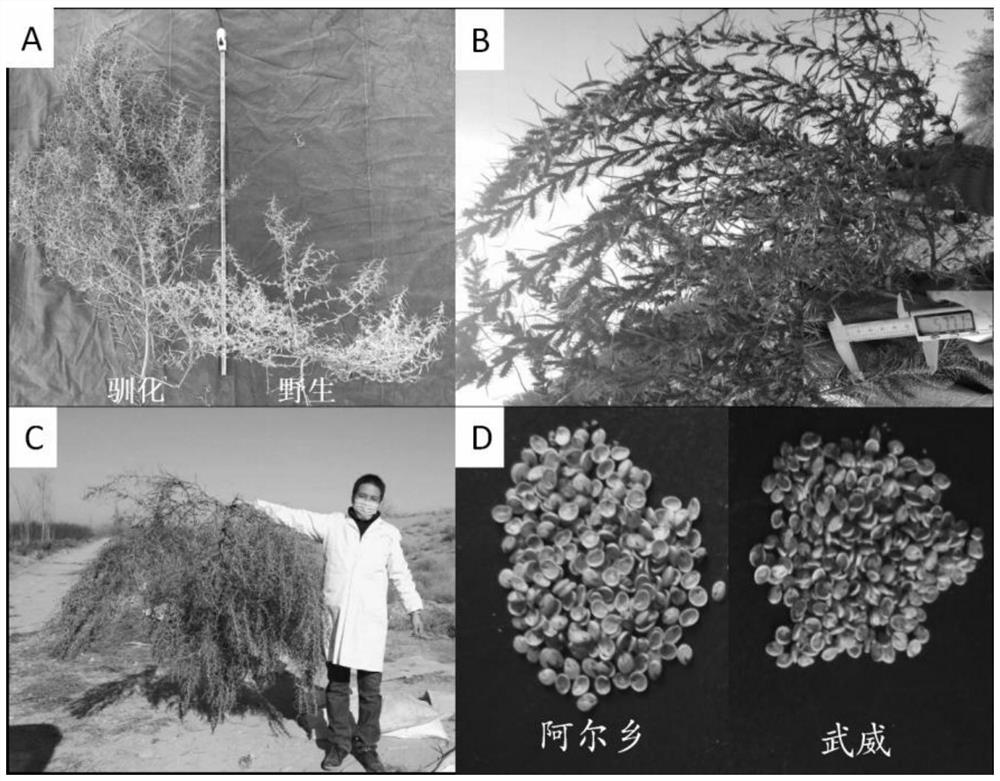Method for domesticating desert plant agriophyllum squarrosum from beginning based on population polymorphism
A polymorphism, desert technology, applied in the fields of botanical equipment and methods, plant cultivation, plant genetic improvement, etc., can solve the problems of hindered promotion and application, and achieve the effect of changing the artificial hybridization process, avoiding risks, and improving adaptability
- Summary
- Abstract
- Description
- Claims
- Application Information
AI Technical Summary
Problems solved by technology
Method used
Image
Examples
Embodiment Construction
[0038] The technical solutions of the present invention will be described below in conjunction with the accompanying drawings and embodiments.
[0039] A method for de novo domestication of desert plant Sapona based on population polymorphism, comprising the following steps:
[0040] Step 1. Sample collection sites and regional divisions of Sapona populations: According to the distribution of Sapona in the wild, according to latitude and longitude, altitude, precipitation, temperature and climate conditions, select wild Sapona populations in multiple locations, and the interval between populations should be at least 50km; the sampling points are distributed in the arid areas of Northwest China and Northeast China, basically covering the distribution range of wild Sapona;
[0041] According to the geographical location, Tiegai Township (100.569°, 36.167°), Dulan (98.124°, 36.306°), Jingtai (104.147°, 37.367°), Shapotou Water Field (105.017°, 37.465°), forehead rest Ke (107.523...
PUM
 Login to View More
Login to View More Abstract
Description
Claims
Application Information
 Login to View More
Login to View More - R&D
- Intellectual Property
- Life Sciences
- Materials
- Tech Scout
- Unparalleled Data Quality
- Higher Quality Content
- 60% Fewer Hallucinations
Browse by: Latest US Patents, China's latest patents, Technical Efficacy Thesaurus, Application Domain, Technology Topic, Popular Technical Reports.
© 2025 PatSnap. All rights reserved.Legal|Privacy policy|Modern Slavery Act Transparency Statement|Sitemap|About US| Contact US: help@patsnap.com


